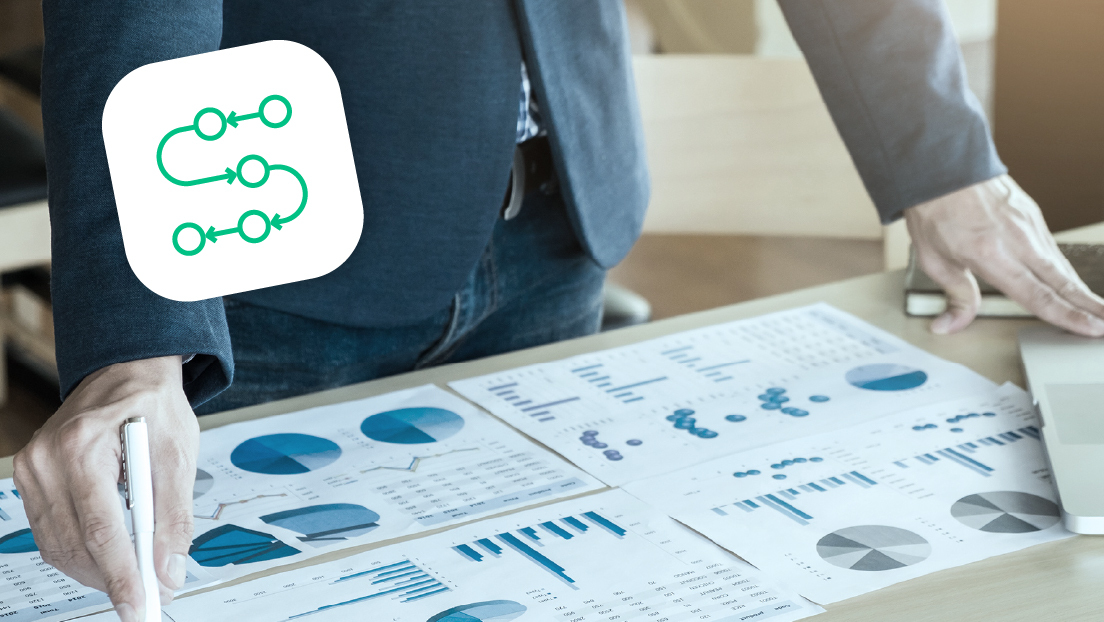The biggest differences between business-to-business (B2B) collections and business-to-consumer (B2C) collections are the stakes at risk. Business accounts are understandably larger, and their timely collection has a bigger impact on your cash flow and liquidity. As such, B2B collections optimization is a necessary goal for most companies.
But creating a good B2B collections experience isn’t simply a matter of applying one or two solutions. Improving commercial collections requires building a smarter A/R organization across the board, from how you collect to the tools you use to manage B2B accounts.
Common B2B Collections Methods
Compared with B2C collections, B2B collections tend to be more involved, with more lines of credit, financing, and stricter collections agreements to consider. You’ll need to have a simple way to keep all this organized, usually handled through B2B collections software or other type of A/R automation platform.
Collections in B2B usually begin with a demand letter letting the business know that the account is overdue, reminding them of payment terms, and giving them a chance to respond to the request.
This doesn’t need to be a harshly-worded letter. Many businesses have faced financial challenges over the past few years, and they may be experiencing the same cash flow problems as you are. If they’re late, reach out to them – not to chastise, but to open a dialogue and get a feel for their situation. It may be reasonable to set up exceptions for certain accounts with new repayment terms.
If this isn’t the case and the debt continues to go unpaid, you can get more aggressive with tactics like repeat calls each day or skip tracing.
Such collection tactics aren’t allowed in B2C under the Fair Debt Collection Practices Act (FDCPA), but they’re fair game in B2B. Be persistent with communications and attempt to make contact. (If you haven’t yet, you should establish an automated Dunning process within your B2B collections software that automates many of these reminder emails and notifications.)
Over time, unpaid bills may require outside intervention from a B2B collections agency. These professionals can do the heavy lifting for you and can telegraph a sense of “seriousness” to delinquent customers who may have ignored past communication attempts. This is one step short of legal action, though it may be necessary to recoup the substantial value of B2B invoices.
Creating a smarter A/R organization means knowing when to levy these aggressive tactics and when a lighter touch is more appropriate to preserve your business relationships.
B2B Collections Best Practices
B2B collections automation and overall success boils down to three main concepts:
- Communication
- Efficiency
- Respect
Communication is the first priority. You must establish clear payment terms with customers, including any penalty fees or fines that may be levied for overdue bills. You should also outline acceptable time periods in which clients can pay, grace periods, and extenuating circumstances for which exceptions can be made.
Of course, clear negotiations are no promise of on-time payment, which is where efficiency comes in. Having easy ways to track B2B payments and respond to late customers efficiently is the cornerstone of a smart A/R process.
Despite this, a recent Pymnts article detailed that 49% of companies still conducted A/R processes manually. This presents challenges even under normal conditions, but given the worldwide shifts towards remote working that have occurred over the past few years, it’s more challenging than ever.
Efficiency depends on B2B collections automation and having structured ways to manage information, contact customers, and generate meaningful reports – all without substantial effort on your end.
The third, though no less important, is respect. It’s vital to stay courteous and professional here – large business accounts bring big value to your organization, even when they have trouble paying on time. It’s more valuable to your company to maintain a good relationship than get too serious too quickly.
Understand that every business has financial challenges to face and attempt to approach solutions collaboratively rather than combatively. Aside from the technology and processes, this mindset is what separates smart A/R organizations from their less successful counterparts.
The Biggest Way to Improve – Automation
As the above rundown suggests, one of the best ways to improve B2B collections is to leverage collections automation to your advantage. It’s a matter of visibility and efficiency. The sooner you can identify a distressed account, the quicker you can take the appropriate action.
A/R automation platforms include intelligence and analysis components that help executives get a real-time look at collections information, generate reports, and produce long-term forecasting that supports future decisions. These tools help businesses identify trends in their data and identify red flags before they escalate into larger problems.
And while no single change to your A/R process can completely transform operations, this technology certainly has the most potential to yield drastic results. A/R automation gives executives the tools they need to stay on top of customer accounts, open lines of communication, and in essence, look into the future by analyzing the past. It’s become an essential part of A/R efficiency in the era of remote working, and it’s one that no smart business can go without.


















